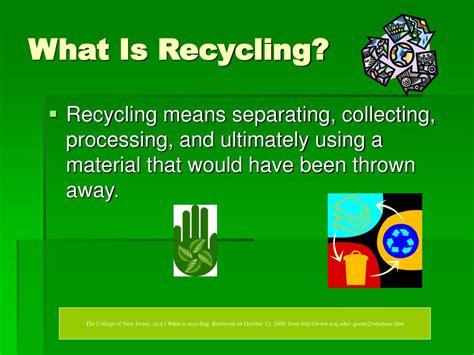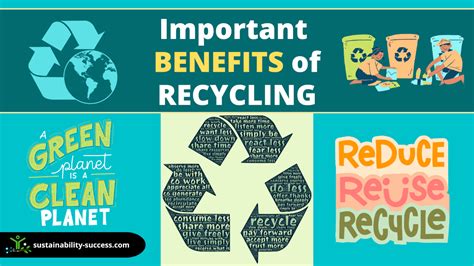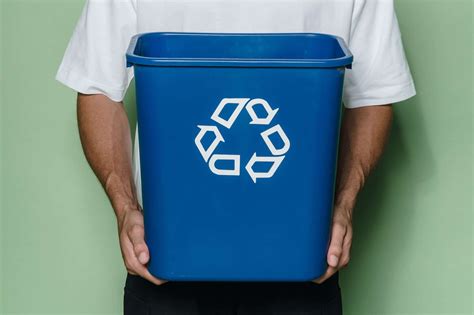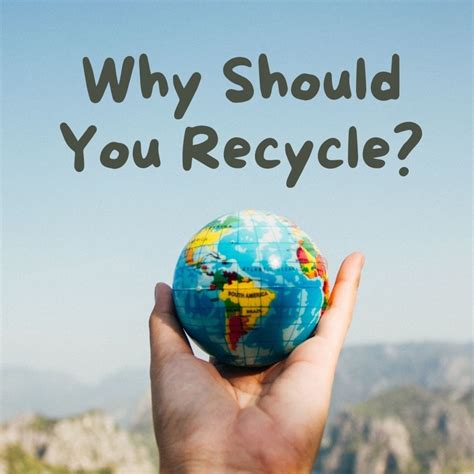What Is Recycling

Recycling is a fundamental process that plays a crucial role in sustainable waste management and environmental conservation. It involves the collection, processing, and transformation of waste materials into new products or resources, reducing the need for raw material extraction and minimizing the environmental impact of waste disposal. With the growing awareness of climate change and the importance of sustainable practices, recycling has become an essential aspect of modern society, offering a viable solution to the ever-increasing global waste problem.
The Importance of Recycling

The significance of recycling extends far beyond the simple act of separating trash. It is a key strategy in the fight against climate change and the preservation of our planet’s resources. By diverting waste from landfills and incineration, recycling helps reduce greenhouse gas emissions, conserve energy, and preserve natural habitats. Additionally, recycling promotes a circular economy, where resources are continuously reused and repurposed, reducing the strain on our finite natural resources.
Furthermore, recycling has economic benefits. It creates job opportunities in the recycling industry, stimulates innovation in waste management technologies, and reduces the costs associated with waste disposal and resource extraction. Many countries and communities have recognized the potential of recycling and have implemented comprehensive recycling programs, encouraging residents to participate and contribute to a more sustainable future.
The Recycling Process

The recycling process is a meticulous journey that begins with the collection of recyclable materials. This initial step is crucial, as it determines the success and efficiency of the entire process. Proper collection methods ensure that only clean and suitable materials are sent for recycling, minimizing contamination and maximizing the quality of the recycled products.
Once collected, the materials undergo a series of processes to prepare them for recycling. This includes sorting, which separates different types of materials such as paper, plastic, glass, and metal. Advanced technologies, like optical sorters and magnetic separators, are often employed to ensure accurate and efficient sorting. After sorting, the materials are cleaned and processed to remove any remaining contaminants, ensuring they are ready for the next stage of recycling.
The next step involves the actual recycling process, where the materials are transformed into new products. This can vary depending on the material type. For example, paper is typically pulped and turned into new paper products, while glass is crushed and melted to create new glass items. Plastic recycling is a more complex process, often involving melting and reforming into new shapes or products. Metal recycling, on the other hand, may involve smelting and reforming into new metal alloys.
Benefits of Different Recycling Processes
Each recycling process offers unique benefits. Paper recycling, for instance, helps conserve trees and reduces the demand for virgin wood pulp, thereby minimizing deforestation. Glass recycling is energy-efficient, as it requires less energy to melt and reform recycled glass than to produce new glass from raw materials. Plastic recycling, although more challenging due to the diverse types of plastics, reduces the need for oil and gas extraction, the primary sources of raw materials for plastic production.
Metal recycling is particularly beneficial as it conserves natural resources such as iron ore, coal, and limestone, which are required in the production of steel. Recycling one ton of steel, for example, saves 2,500 pounds of iron ore, 1,400 pounds of coal, and 120 pounds of limestone. This not only reduces the environmental impact of mining but also conserves valuable resources for future generations.
Recycling and Environmental Conservation
Recycling plays a pivotal role in environmental conservation by mitigating the negative impacts of waste on our ecosystems. Landfills, which are often the default waste disposal method, can have detrimental effects on the environment. They release harmful gases, including methane, a potent greenhouse gas, and leachate, a toxic liquid that can contaminate groundwater and soil. Recycling helps reduce the amount of waste sent to landfills, thereby minimizing these environmental hazards.
Moreover, recycling reduces the demand for raw material extraction, which often involves destructive practices such as deforestation, mining, and oil drilling. By reusing materials, recycling preserves natural habitats, protects biodiversity, and conserves energy. For instance, recycling aluminum cans saves 95% of the energy required to make new cans from bauxite ore, the primary source of aluminum.
| Material | Environmental Impact of Recycling |
|---|---|
| Paper | Conserves trees, reduces deforestation, and minimizes water pollution from paper production. |
| Glass | Reduces energy consumption and air pollution from glass manufacturing. |
| Plastic | Reduces oil and gas extraction, lowering carbon emissions and preserving marine ecosystems. |
| Metal | Conserves natural resources, reduces mining impacts, and minimizes energy consumption. |

The Future of Recycling
The future of recycling is promising, with continuous advancements in technology and increasing global awareness of the importance of sustainable practices. Many countries are already implementing ambitious recycling goals and developing innovative solutions to improve recycling rates and efficiency.
One of the key challenges in recycling is the complexity of certain materials, especially plastic. However, researchers and engineers are developing advanced technologies to address this issue. For instance, chemical recycling methods are being explored to break down plastics into their basic chemical components, allowing for more efficient recycling. Additionally, the development of biodegradable and compostable materials offers an alternative to traditional plastics, reducing the environmental impact of waste disposal.
Furthermore, the concept of a "circular economy" is gaining traction, where products are designed with recycling and reuse in mind. This approach encourages the use of renewable or recyclable materials, extends the lifespan of products through repair and refurbishment, and promotes the recycling of products at the end of their life cycle. By embracing a circular economy, we can reduce waste generation and create a more sustainable and resilient system.
The Role of Technology in Recycling
Technology plays a vital role in enhancing the efficiency and effectiveness of recycling processes. Advanced sorting technologies, such as artificial intelligence and robotics, are being utilized to improve the accuracy and speed of material sorting. These technologies can identify and separate different types of materials, even those that are difficult to distinguish by traditional methods.
Moreover, digital platforms and apps are being developed to educate and engage the public in recycling. These tools provide information on recycling programs, offer guidance on proper recycling practices, and even incentivize participation through reward systems. By leveraging technology, we can create a more informed and engaged community, driving up recycling rates and contributing to a greener future.
FAQs

What are the main benefits of recycling?
+Recycling offers numerous benefits, including reducing waste sent to landfills, conserving natural resources, reducing energy consumption, mitigating greenhouse gas emissions, and promoting a circular economy.
How does recycling contribute to climate change mitigation?
+Recycling helps mitigate climate change by reducing the need for raw material extraction, which is often energy-intensive and emits large amounts of greenhouse gases. By recycling, we can lower our carbon footprint and contribute to a more sustainable future.
What are some common challenges in the recycling process?
+Common challenges include contamination of recyclable materials, lack of proper infrastructure and facilities, low public awareness and participation, and the complexity of certain materials, especially plastic, which can be difficult to recycle effectively.
How can individuals contribute to recycling efforts?
+Individuals can contribute by participating in local recycling programs, properly sorting and preparing recyclable materials, reducing waste generation through mindful consumption, and supporting businesses and products that prioritize recycling and sustainable practices.
What is the future outlook for recycling?
+The future of recycling looks promising with advancements in technology and increasing global awareness of sustainability. We can expect improved recycling rates, more efficient processes, and a shift towards a circular economy, where resources are continually reused and recycled.
In conclusion, recycling is a powerful tool in our fight against climate change and environmental degradation. By understanding the importance of recycling, the recycling process, and its environmental benefits, we can make informed choices and contribute to a more sustainable future. Let’s embrace recycling as a collective effort to protect our planet and ensure a greener tomorrow.



